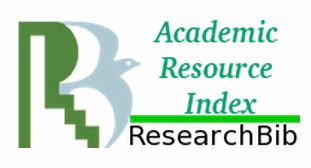THE ROLE OF TEACHERS IN PREVENTING BULLYING IN ELEMENTARY SCHOOLS: ACHIEVING QUALITY EDUCATION IN ALIGNMENT WITH SUSTAINABLE DEVELOPMENT GOAL 4
DOI:
 https://doi.org/10.37859/jeq.v9i3.7844
https://doi.org/10.37859/jeq.v9i3.7844
Abstract
Bullying in elementary schools is a widespread issue that significantly impacts students' mental health, social development, and academic performance. This study examines the crucial role of teachers in preventing bullying and explores its implications for achieving quality education in line with Sustainable Development Goal (SDG) number 4. Using a qualitative descriptive methodology, data were collected through questionnaires administered to students, supported by secondary data analysis from relevant literature and legal frameworks. The findings indicate that students' understanding of bullying makes them vulnerable to this practice. Proactive involvement of teachers in creating a safe and inclusive learning environment is essential to reducing incidents of bullying. Furthermore, this study highlights the importance of legal regulations, such as the Child Protection Law, in providing a framework for teachers to effectively fulfill their responsibilities. In this community service activity, students from SD 12 Lubuk Garam, Siak Kecil, were provided with knowledge about bullying and its effects on mental health. The research results show that teachers must transform from traditional educators into active agents of social change, promoting a culture of respect and safety within schools. This study encourages the enhancement of legal literacy among educators and the implementation of ongoing professional development programs focused on bullying prevention strategies. By equipping teachers with the necessary tools and knowledge, schools can create a more supportive atmosphere conducive to quality education and the overall well-being of students.
Keywords: Bullying, Elementary School, Role of The Teachers, Sustainable Development Goal
Downloads
References
Book
Muzammil, M., & Arshad, M. Youth in danger and students at risk of dropping out, Edinburg: The University of Texas Rio Grande Valley, 2023. https://scholarworks.utrgv.edu/chem_fac/263.
Research Results/Final Project
Rawana, E., Brownlee, K., Whitley, J., Rawana, J., Franks, J., & Walker, D. Strengths in motion: A strengths-based approach to enhance positive school climate and address issues of bullying and school violence, 2009. https://www.researchgate.net/publication/273446963_Strengths_in_Motion_A_Strengths-Based_Approach_to_Enhance_Positive_School_Climate_and_Address_Issues_of_Bullying_and_School_Violence.
Safe and Supportive School Communities (SSSC) Working Group. A review of literature (2010-2014) on student bullying.
Journal Articles
Cook, C. R., Williams, K. R., Guerra, N. G., Kim, T., & Sadek, S. “Predictors of bullying and victimization in children and adolescents: A 1-year longitudinal study,” School Psychology Quarterly, Vol. 25, No. 1, 2010, pp. 3-16. https://doi.org/10.1037/a0023486.
Man, X., Liu, J., & Xue, Z. “Effects of bullying forms on adolescent mental health and protective factors: A global cross-regional research based on 65 countries,” International Journal of Environmental Research and Public Health, Vol. 19, No. 2, 2022, Article 2374. https://doi.org/10.3390/ijerph190202374.
Magazines/Newspapers
Ariwandono, A. “Online evil: Indonesia's cyberbullying problem,” The Jakarta Post, 28 March 2023. https://www.thejakartapost.com/paper/2023/03/28/online-evil-indonesias-cyberbullying-problem.html.
Internet
Australian Government Department of Education and Training. National Safe Schools Framework, Student Wellbeing Hub, 2016. https://www.studentwellbeinghub.edu.au/educators/nssf#/element/policies-and-procedures/characteristics.
Centre for Education Statistics and Evaluation. Anti-bullying interventions in schools – what works? Literature review, n.d. https://education.nsw.gov.au/content/dam/main-education/en/home/student-wellbeing/attendance-matters---resources-for-schools/anti_bullying_in_schools_what_works_AA.pdf.
National Center for Education Statistics (NCES). Indicators of school crime and safety: 2018, U.S. Department of Education, 2019. https://nces.ed.gov/pubs2019/2019047.pdf.
Office for National Statistics. Bullying and online experiences among children in England and Wales: Year ending March 2023. Statistical bulletin, 2024. https://www.ons.gov.uk/peoplepopulationandcommunity/crimeandjustice/bulletins/bullyingandonlineexperiencesamongchildreninenglandandwales/yearendingmarch2023.
Sekolah Relawan. (2024). Kasus Bullying di Sekolah Meningkat Selama 2023. Sekolah Relawan. Retrieved from Sekolah Relawan
UNESCO. Definition of Sustainable Development Goal (SDG) thematic indicator 4.a.2: Percentage of students who experienced bullying in the past 12 months, ED-2021/WS/24 Rev, 2021. https://unesdoc.unesco.org/ark:/48223/pf0000378924.
UNICEF. Parenting bullying: What is it and how to stop it. How to prevent and deal with bullying, n.d. https://www.unicef.org/parenting/child-care/bullying#:~:text=A%20person%20who%20bullies%20intends,rather%20than%20an%20isolated%20incident.
Legal Regulations
Republik Indonesia. Undang-Undang Perlindungan Anak (UU No. 35 Tahun 2014).
Republik Indonesia. Undang-Undang Sistem Pendidikan Nasional (UU No. 20 Tahun 2003). https://jdih.kemdikbud.go.id/sjdih/siperpu/dokumen/salinan/UU_tahun2003_nomor020.pdf.












